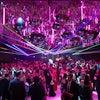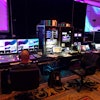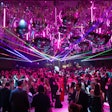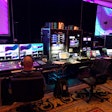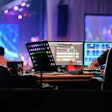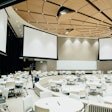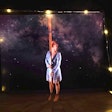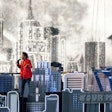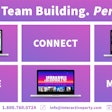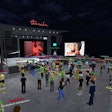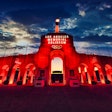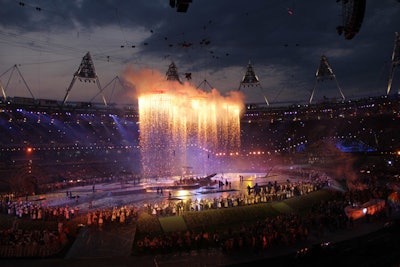
The London Olympics opening and closing ceremonies, Victoria’s Secret Fashion Show, NBC's New Year’s Eve celebration, and Hurricane Sandy: Coming Together benefit—those are just a few of the television projects credited to Hamish Hamilton and Ian Stewart and their production company, Done and Dusted. Since its founding 15 years ago, the company has made a name for itself in the world of event-based television production. What they’ve learned along the way is applicable to any event, particularly now that many events of all types and sizes have both in-person and remote audiences. We asked Hamilton and Stewart to share some of their insights.
What are the challenges of producing an event that is engaging for both the people in the room and those experiencing it via television or online?
Hamilton: Immediately I think of conflict. Resolvable conflict. Because they are two very different mediums—the live experience in the room and then either live video or prerecorded video experience. I think there are a number of occasions when you do have to choose which is your primary medium, the room or the lens, whatever that lens may be. There has to be an acceptance as well that certain events will work better in the flesh as it were than on camera. A lot of things are made to experience live, and the capturing of those on video is intensively difficult. You have to accept that. Our natural bias is to produce events as TV producers and directors because that is our experience. All the way through the process, if you are transmitting for later use, you have to make a call at each stage. I have been in a situation where when you come back to watch it later on television or in an edit suite or online, people say that’s not very good, and we say, "Well, we did mention that we needed a little more light, or we did need that microphone, or that camera position was pretty essential."
Stewart: Traditionally, broadcast was a very arrogant medium in that everything was made for its consumption. You still see examples where people treat the audience like a bit of cattle to applaud now, stop now, applaud harder. My belief is that tends to build up resentment with the audience who are there to have fun and enjoy the event, and then along comes this arrogance—traditionally TV—and it runs roughshod all over them. Our touchstone has always been that the event comes first. If people are having fun at the event and obviously enjoying it and clapping and laughing, then it is much easier to capture energy by pointing the cameras at what is happening. It’s damn obvious that people are enjoying it, and then you naturally get excited by that energy going on in the room. Trying to inject that later with an edit is almost impossible.
How have you seen things change over the years?
Stewart: If we go back some 20 years, you’d see the snarly event production managers literally sneering as you came in, and you’d hear at least one grumble under his breath, "Here come the 'vidiots.'" What we did when we started Done and Dusted almost 15 years ago was that if we made the event, then we could go a long way to breaking down that natural friction that existed. It was a natural thing to go away from our broadcast background to actually make the events ourselves. And it has made it easier.
Hamilton: Over the last 10 years I’ve noticed a massive difference. Ten to 15 years ago there was a huge arrogance on the part of television, video, and film event communities who would come in and massacre events, concerts, shows in the interest of getting correct pictures on one’s television screen. They shredded the heart and soul out of these events. There’s still a little bit of that resistance between the communities. But what’s happening in the last five years—with the explosion of social media and streaming and with everyone being a director and producer because they have an iPhone and they can post on YouTube—is that actually now there’s an understanding and wider acceptance of what is required of camera and sound and what makes a good clip. So I do think within the last five years it’s easier as a director to go into communities to work with people because they are already halfway there.
Is there such a thing as too much production?
Hamilton: Screens and video reinforcements really exploded onto the scene about 10 or so years ago. I tend now to like shows without screens because I find sometimes the screen content will have very little to do with the story, and that’s the most important thing. I love those TED Talks when it’s just a really interesting person. It’s dead simple. They are great events to be at. They are elegantly captured by unobtrusive cameras. That’s an example of incredibly interesting people standing on a simple theatrical stage and informing and in some cases moving you. Sometimes less is definitely more. Dazzling isn’t necessarily emotionally compelling. Sometimes dazzling is blinding. One of the things that is critical is writing. Writing your speech in a way that is interesting and compelling and then delivering it in a way that is interesting and compelling—thinking about staging in a supportive way—may actually buy you much more than spending tens of thousands on very large screens and such.
Stewart: Sometimes the most effective thing to do with a screen is to turn it off. It’s the shock of not seeing it all of a sudden after you’ve been bashed over the head with it, and then it goes to very simplistic lighting. It creates a breathtaking moment. You’ve got to keep changing it up. As soon as they know the trick, you’ve got to change it up. On the far end of that scale is U2, who would bring out the most amazing technology that no one had ever seen and use it for one song and then you’d never see it again. They use their best tricks so sparingly and then take them away, constantly surprising the audience.
How has social media impacted what you do?
Stewart: You are nothing until it’s broadcast. Sometimes the audience is 1,000 or 10,000 or 50,000 at an event, but they are nothing until it’s going to the millions and hundreds of millions on YouTube. There’s much more understanding from our clients these days of, "Yeah we get it, the event has to be amazing," but it is nothing until it translates and gets out to the far, far bigger, colossal numbers, compared to the people that actually attend the event.
Hamilton: The other thing about the world we are living in now, when you are in the event space, through the many different delivery mechanisms, you can aggregate small numbers of people from very disparate parts of the world. You can actually now create an event—I go back to TED Talks. They choose topics that resonate around the world. Whereas before, creating an event like that might not be a viable option. Now you’ve got an effective way of tapping into these communities around the world. We also get tremendous feedback from YouTube postings or Facebook postings, and people can consume your event in ways you may not even have imagined.
